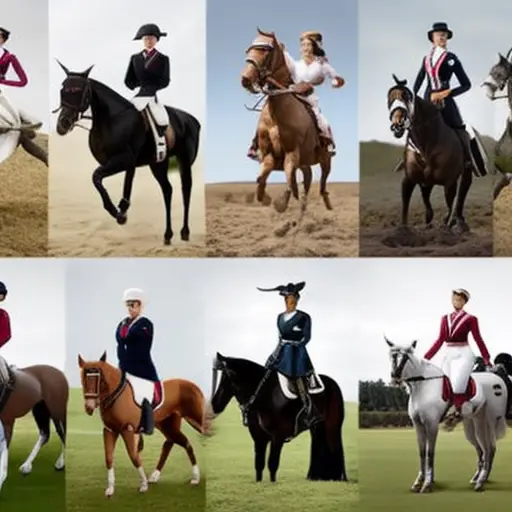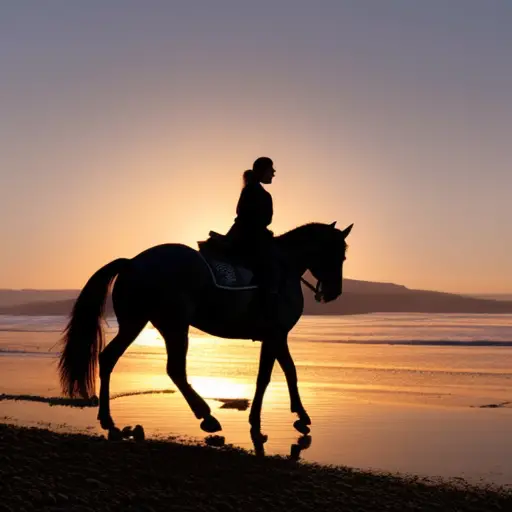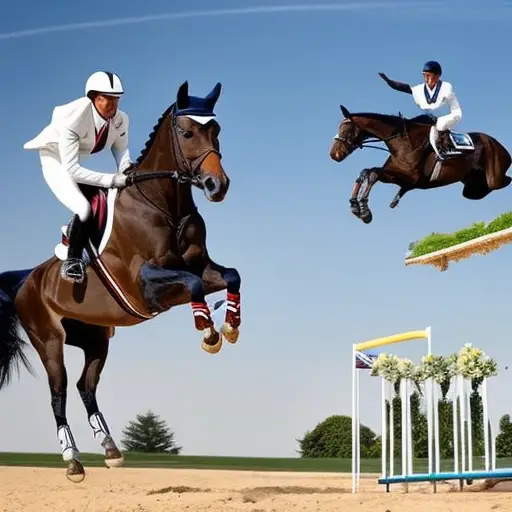The Role of Women in Equestrian Sports: A Historical Perspective

Strap on your riding boots and get ready to gallop through history! In this article, we’ll explore the remarkable journey of women in equestrian sports.
From trailblazing pioneers who shattered gender stereotypes to the triumphs of female athletes in the Olympics, their impact cannot be underestimated.
We’ll delve into the ways women have challenged norms and taken on leadership roles, as well as their vital contribution to equestrian sports education.
Join us as we celebrate the incredible achievements of women in this exhilarating world.
Early Women Equestrians: Pioneers in the Field
Do you know who were the early women equestrians that pioneered in the field? These early women equestrians played a significant role in the history of equestrian sports, leaving a lasting impact and inspiring future generations of female riders. Despite the societal constraints and gender norms of their time, these women defied expectations and made notable achievements in the equestrian world.
One of the early women equestrians who achieved historical significance was Alice Hayes. In 1904, she became the first woman to compete in the Olympic Games, participating in the equestrian events. Her participation not only showcased her skills as a rider but also challenged the prevailing beliefs about women’s abilities in sports.
Another notable figure is Lizzie Holmes, an accomplished horsewoman of the late 19th century. Holmes was known for her exceptional horsemanship and her ability to handle even the most challenging horses. She won numerous championships and became a role model for aspiring female equestrians.
These early women equestrians paved the way for future generations by breaking barriers and proving that women could excel in the field of equestrian sports. Their historical significance lies in their courage to challenge societal norms, their notable achievements, and their inspiration to countless women who followed in their footsteps.
Breaking Barriers: Women’s Participation in Competitive Equestrian Sports
You can’t deny the fact that women have made significant strides in breaking barriers and actively participating in competitive equestrian sports. Throughout history, women have faced numerous struggles and obstacles in their pursuit of equality in equestrian sports. However, their determination and passion for the sport have allowed them to overcome these barriers and pave the way for future generations of female riders.
The evolution of women’s participation in competitive horse riding has been a remarkable journey. In the early days, women were often discouraged from participating in equestrian sports due to societal norms and prejudices. They were seen as fragile and delicate, believed to be incapable of handling the physical demands of riding.
Despite these challenges, women slowly began to challenge these stereotypes and prove their worth in the equestrian world. In the late 19th and early 20th centuries, pioneering female riders such as Lottie Dod and Alice Hayes made significant strides in competitive horse riding, showcasing their skills and breaking gender barriers.
As time progressed, more opportunities opened up for women in equestrian sports. The establishment of organizations and governing bodies dedicated to promoting women’s participation, such as the Women’s Sports Foundation and the International Federation for Equestrian Sports (FEI), played a crucial role in facilitating their progress.
Today, women compete at the highest levels of equestrian sports, including disciplines such as show jumping, dressage, and eventing. They’ve proven time and time again that they possess the skill, talent, and determination to excel in these competitive arenas.
While women’s struggles in equestrian sports aren’t entirely eradicated, their participation and achievements continue to inspire future generations. The journey of breaking barriers and achieving equality in competitive equestrian sports is ongoing, but the progress made thus far is undeniably significant. Women riders today are a testament to the indomitable spirit and unwavering passion that drive them to conquer any obstacle that stands in their way.
Women Equestrians in the Olympics: A Legacy of Excellence
Women equestrians haven’t only excelled in the Olympics, but they’ve also left behind a legacy of excellence. In the discipline of dressage, women equestrians have proven to be masters of precision. Dressage requires a high level of control and harmony between the rider and the horse, and women have consistently shown their ability to achieve this. Through their dedication and skill, they’ve become some of the most successful competitors in dressage, winning numerous medals and titles.
In show jumping, women equestrians have been soaring to new heights. Show jumping is a thrilling and challenging discipline that tests the athleticism, agility, and courage of both the horse and the rider. Women have showcased their strength and determination in this sport, achieving remarkable success. They’ve been able to navigate intricate courses filled with obstacles, displaying their ability to make quick decisions and maintain composure under pressure. Their performances have been truly awe-inspiring, and they’ve garnered a reputation for their exceptional talent and achievements.
The legacy of excellence that women equestrians have established in the Olympics is a testament to their passion, hard work, and dedication to their sport. They’ve shattered gender stereotypes and proven that they’re equal to their male counterparts. Their achievements have inspired future generations of women to pursue their dreams in equestrian sports and have paved the way for greater opportunities and recognition. Women equestrians in dressage and show jumping continue to make history and contribute to the rich tapestry of equestrian excellence in the Olympics.
Challenging Gender Norms: Women in Equestrian Leadership Roles
As a woman in equestrian sports, you have the opportunity to challenge gender norms and take on leadership roles within the industry. The presence of women in equestrian leadership roles has been steadily increasing over the years, promoting gender equality in equestrian sports. Women are breaking barriers and proving their capabilities as leaders, whether it be as trainers, coaches, or managers.
One of the ways women are challenging gender norms in equestrian sports is by taking on roles traditionally held by men. They aren’t just riders, but also decision-makers and influencers within the industry. By assuming leadership positions, women are showing that they’ve the knowledge, skills, and abilities necessary to excel in these roles.
Furthermore, women in equestrian leadership roles are actively promoting gender equality within the sport. They’re advocating for equal opportunities for women, both on and off the field. They’re working towards creating a more inclusive and diverse environment where women can thrive and succeed. This not only benefits women in the industry but also helps to break down gender stereotypes and create a more equitable society.
Empowering the Next Generation: Women’s Impact on Equestrian Sports Education
By actively participating in equestrian sports education, women have been able to empower the next generation of riders and trainers. Women’s representation in equestrian sports education has played a crucial role in promoting diversity and inclusivity within the industry. Here are three ways in which women have made a significant impact:
-
Mentorship and Role Models:
Women who’ve achieved success in equestrian sports education are serving as mentors and role models for aspiring riders and trainers. Their accomplishments inspire young girls to pursue their dreams and break gender barriers in the sport. Through their guidance and support, these women empower the next generation to believe in their abilities and strive for excellence. -
Creating Opportunities:
Women in equestrian sports education have been instrumental in creating opportunities for aspiring riders and trainers, especially those from underrepresented backgrounds. They actively work towards making the sport more accessible and inclusive, ensuring that everyone has an equal chance to participate and succeed. -
Advocacy for Equality:
Women in equestrian sports education are vocal advocates for equality and fairness in the industry. They actively challenge gender biases and stereotypes, pushing for equal opportunities and recognition for all riders and trainers, regardless of their gender. Their advocacy helps to promote diversity and create a more inclusive environment for the next generation.
Through their active participation and dedication to equestrian sports education, women are playing a pivotal role in empowering the next generation of riders and trainers, while promoting diversity and inclusivity within the industry.
Frequently Asked Questions
How Did Women’s Participation in Equestrian Sports Impact Their Social Status During the Early Years?
Participating in equestrian sports elevated women’s social status during the early years. Their involvement challenged cultural perceptions, contributing to the advancement of feminism and promoting gender equality in society.
What Were Some of the Challenges Faced by Women Equestrians in Breaking Into Competitive Equestrian Sports?
Breaking into competitive equestrian sports was no easy feat for women. They faced numerous challenges and obstacles, from societal expectations to lack of opportunities. But their determination and passion helped them overcome these barriers and pave the way for future generations.
How Has the Representation of Women Equestrians in the Olympics Evolved Over the Years?
Over the years, the representation of women equestrians in the Olympics has evolved significantly. Opportunities have expanded, allowing more women to compete. This has had a positive impact on gender equality in equestrian sports.
What Are Some of the Key Barriers That Women Still Face in Attaining Leadership Roles in the Equestrian Industry?
Gender discrimination and the glass ceiling persist in the equestrian industry. Despite women’s achievements, they still face barriers in attaining leadership roles. It’s time to break these barriers and create a level playing field for all.
How Have Women’s Contributions in Equestrian Sports Education Influenced the Overall Growth and Development of the Sport?
Inclusion initiatives and the contributions of female equestrian pioneers have greatly influenced the growth and development of equestrian sports education. Their impact can be seen in the increased participation and success of women in the sport.
Conclusion
You may find it surprising, but throughout history, women have defied societal norms and excelled in the world of equestrian sports. From the early pioneers who broke barriers to the accomplished athletes competing in the Olympics, women have left an indelible mark on the sport.
Moreover, they’ve also challenged gender norms by assuming leadership roles within the equestrian community. Their impact isn’t limited to their own achievements but extends to empowering the next generation through education.
These remarkable women have truly shaped the landscape of equestrian sports.

Join Davina Gardea on a journey into the world of horsemanship. With a deep passion for horses and years of experience, Davina shares invaluable insights and techniques to enhance your connection with these magnificent creatures. Explore the art of riding, training, and nurturing a profound bond with horses at diedgone.com.





